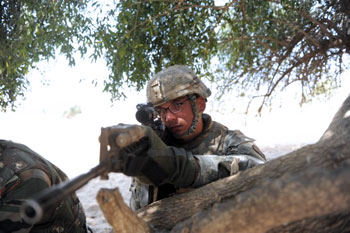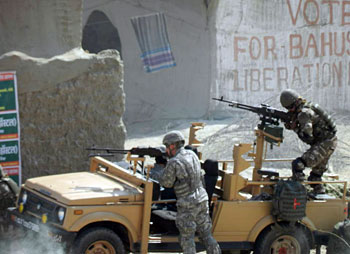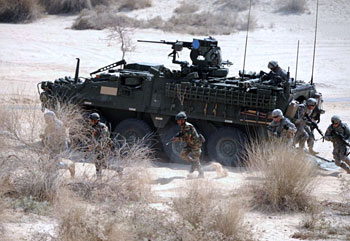INDIAN ARMED FORCES CHIEFS ON
OUR RELENTLESS AND FOCUSED PUBLISHING EFFORTS

SP Guide Publications puts forth a well compiled articulation of issues, pursuits and accomplishments of the Indian Army, over the years

I am confident that SP Guide Publications would continue to inform, inspire and influence.

My compliments to SP Guide Publications for informative and credible reportage on contemporary aerospace issues over the past six decades.
- Prime Minister witnesses 'Bharat Shakti' – a Tri-Services Firing and Manoeuvre Exercise in Pokhran, Rajasthan
- Interim Defence Budget 2024-25 — An Analysis
- Union Defence budget 2024
- Prime Minister Modi Commemorates Indian Navy Day in a Grand Ceremony
- Prime Minister Modi Flies in the LCA Tejas
- New Chapter in India-Italy Defence Ties
- Airpower beyond Boundaries
Exercise Yudh Abhyas 2012
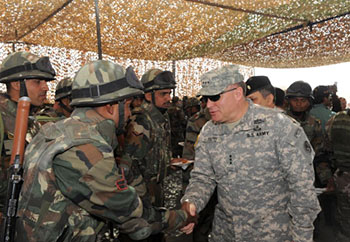 |
||||||||
| Indo-US troops interacting with each other | ||||||||
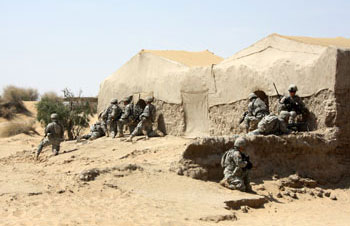 |
||||||||
| Close cordon of insurgent hideout | ||||||||
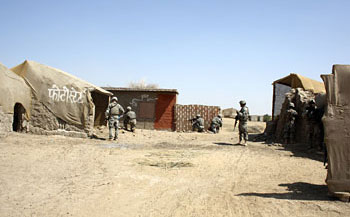 |
||||||||
| Closing on to the insurgent hideout | ||||||||
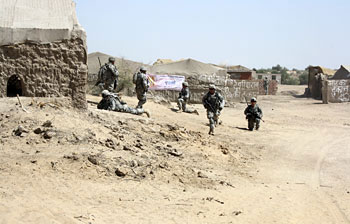 |
||||||||
| Estblishment of the cordon around the abandoned village
March 20, 2012: The Indo-US land forces engagement has progressed substantively. Starting at the first Yudh Abhyas exercise seven years ago at the basic platoon level, the exercise held this year has evolved into an advanced command post and field training exercise.
Spread across two locations under the Army's South Western Command since early March, this years Yudh Abhyas involves a US Army contingent from the US Army Pacific (USARPAC), part of their Pacific Command (PACOM) and troops from the 2nd Squadron 14th US Cavalry Regiment from 25th Infantry Division, Hawaii, along with a platoon of Strykers. The Indian Army fielded a similarly-sized mechanized infantry unit. According to the Army, "The event is all the more interesting as a number of key surveillance, communications and Improvised Explosive Devices detection and neutralisation technologies, available with both sides have been fielded in the exercise." The exercise involved several key elements of close joint engagement for offensive objectives. For instance, as part of the field training element codenamed Desert Lark, troops from both sides performed a joint cordon and search drill to neutralise suspected insurgents in a specially constructed training area at the ranges in an abandoned village in the Mahajan Field Firing Range in Rajasthan. The dramatic drill had the Indian and US troops establishing a physical cordon by deploying their respective combat vehicles at night, followed by a ground push by troops to zero in on and flush out insurgents. Helicopter support was part of the drill for injection and evacuation of the crew, and to provide air support. Several elements of the drill were reminiscent of the final manoeuvers employed during Operation Neptune Spear, the mission that eliminated Al Qaeda chief Osama bin Laden in Abbottabad, Pakistan. It may be noted that a similar manoeuver was also performed by Indian Army troops at Exercise Vijayee Bhava last year in Rajasthan.
DESERT LARK and SARVADA SAVIOURS was witnessed by an Indian and US Army delegation, headed by Lt Gen Gyan Bhushan, GOC-in-C South Western Command and Lt Gen Francis "Frank" Wiercinski, commander of the US Army Pacific, as also the co-chair of the Executive Steering Group (ESG) for Indo-US army training events and exchanges. The weapons and systems involved at Yudh Abhyas included Stryker special vehicles, anti-armour and infantry weapons from the US side. The Indian Army fielded BMP armoured personnel carriers, IAF Mi-17 helicopters and support systems. As with the earlier iterations, the current Yudh Abhyas combat drill has been designed to promote cooperation, interoperability and operational understanding between the Indian and US land forces at the tactical level, with a strong and evolving focus on sharing training procedures and building joint operating skills, within the framework of UN peacekeeping operations. |





